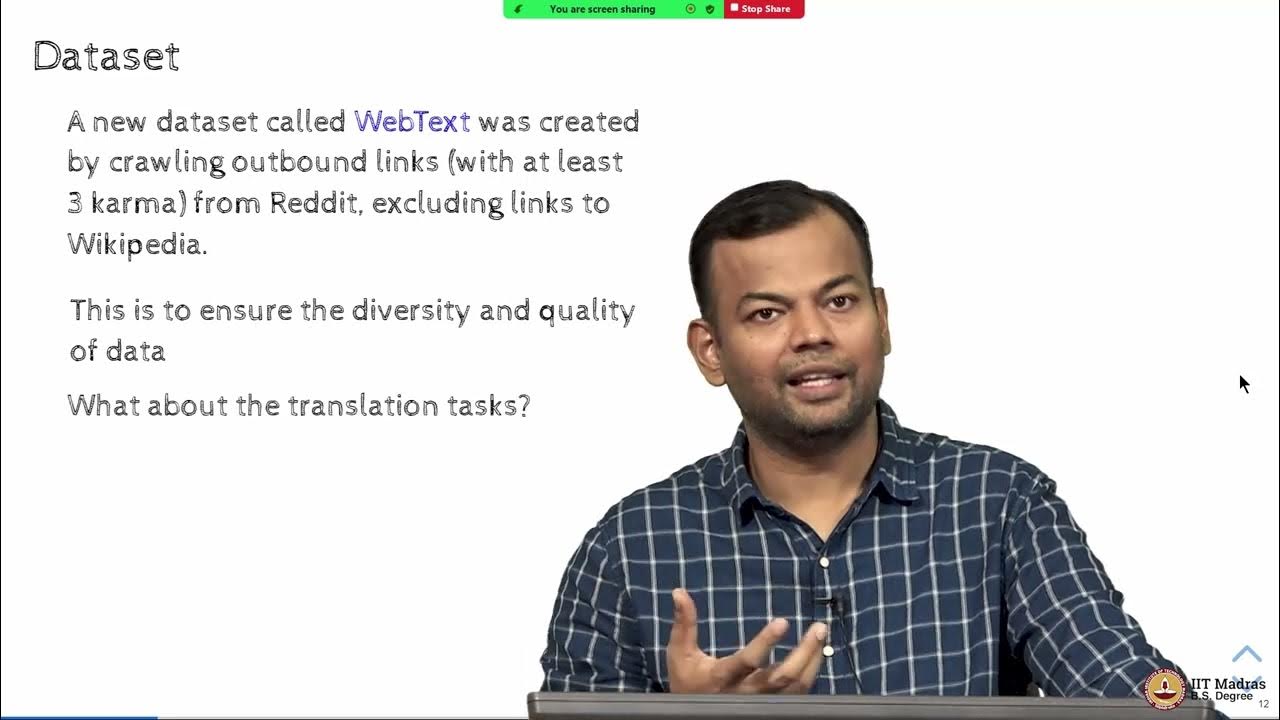A basic introduction to LLM | Ideas behind ChatGPT
Summary
TLDRThe video discusses language models and large language models like GPT and ChatGPT. It explains how LMs work by predicting the next word in a sequence to model patterns in human language. As more training data and parameters are added, LMs become LLMs like GPT and can be used in solutions for tasks like question answering. The video also introduces concepts like prompt engineering, model security, giving LMs access to tools through APIs, reasoning in LMs, retrieval augmented generation, and model fine-tuning.
Takeaways
- 😀 Language models (LMs) predict the next word in a sequence based on patterns in training data
- 📚 LMs can be used to build solutions like question answering systems
- 🔬 Researchers use more data and parameters to create large LMs (LLMs)
- 💰 LLMs require lots of compute and are expensive to train
- 🤗 Some LLMs are open source and can run locally without APIs
- ✏️ Prompt engineering involves carefully crafting inputs to get desired LLM outputs
- 🔒 There are security concerns around malicious use of powerful LLMs
- ⚙️ LLMs can be given access to tools through APIs to take actions
- 🧠 Making LLMs exhibit reasoning is an area of research
- 📝 Fine-tuning trains parts of a model for specialized tasks
Q & A
What is a language model and how does it work?
-A language model (LM) takes a sequence of words as input and predicts the next word. It tries to model the patterns in human language based on the data it has been trained on.
How can language models be useful?
-Instead of giving an LM random sentences, we can give it questions and instructions to get useful outputs like answers. With enough data and model capacity, LMs can be used to build solutions.
Why do large language models require so much data and compute?
-To model the complexity of human language, LMs need to be trained on internet-scale data (10s of TBs). Bigger models with 100s of billions of parameters also require specialized GPUs for training over months.
What are some popular large language models?
-GPT by OpenAI, LLama by Meta, Falcon by Microsoft/FAIR, Bloom by Anthropic, and more. Many are now open source so you can run them locally.
What is prompt engineering for large language models?
-The way inputs are formatted and fed to LMs can greatly impact outputs. Prompt engineering studies how to frame prompts to get desired and accurate responses from LMs.
How can LMs access tools through APIs?
-LMs can be instructed to output API calls instead of just text. These payloads can then be used to actually invoke those APIs and take actions.
What security concerns exist around large language models?
-Potential issues include generating harmful text, prompt hacking to force unsafe outputs, and more. Work is being done to make LMs secure.
What does retrieval augmented generation mean?
-When an LM needs extra context documents to answer questions, relevant chunks can be retrieved and added to the prompt for better responses.
How does fine-tuning a large language model work?
-Task-specific layers can be added and trained on top of a pre-trained LM for customized performance on specialized datasets.
What other focus areas exist for improving large language models?
-Giving LMs reasoning abilities, tools access through APIs, prompt engineering for better responses, and security.
Outlines

This section is available to paid users only. Please upgrade to access this part.
Upgrade NowMindmap

This section is available to paid users only. Please upgrade to access this part.
Upgrade NowKeywords

This section is available to paid users only. Please upgrade to access this part.
Upgrade NowHighlights

This section is available to paid users only. Please upgrade to access this part.
Upgrade NowTranscripts

This section is available to paid users only. Please upgrade to access this part.
Upgrade Now5.0 / 5 (0 votes)





